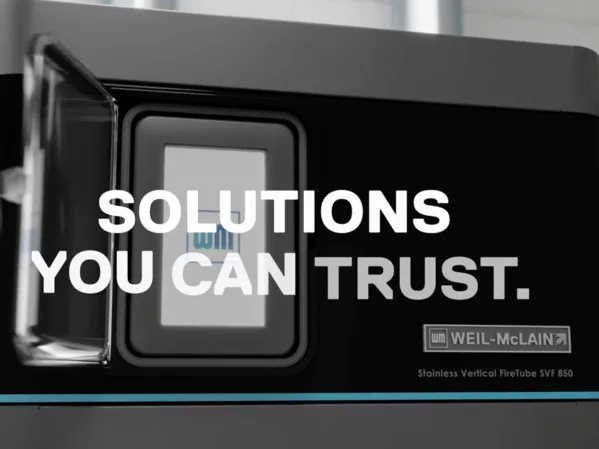As Aristotle famously said, “The whole is greater than the sum of its parts.” The same rings true when managing a building’s plumbing system. In well-engineered systems, all the components — pipes, valves, water heaters, fixtures and fittings, pumps and drains — work together to achieve safe and efficient water flow. However, changing one part of the system by lowering flow rates, for example, can cause unintended safety and operational consequences.
Through its Rethink Water initiative, Plumbing Manufacturers International (PMI) is addressing the importance of safely and responsibly managing building plumbing systems. One of PMI’s priorities is to work with and educate policymakers who favor mandating the use of plumbing products consuming less water than thoroughly performance-tested WaterSense models certified by the Environmental Protection Agency.
In California and other drought-ridden states, reducing flow and flush rates might sound like a good water-saving idea. However, doing so may negatively affect plumbing system performance.
For example, using less water per toilet flush may lead to double flushes consuming even more water, inadequate drain carry of solid waste, blockages in sewer pipes and backflow into potable drinking water. Lower-flow showerheads may lead to longer showers to properly rinse soap from hair. Also, buyers may find the performance of lower-flow products unsatisfactory and choose to leave them on store shelves.
Sticking to Proven Flow Rates
When designing products, plumbing manufacturers evaluate the effects of water flow on the entire plumbing system. WaterSense plumbing products represent a strong example of how manufacturers’ thorough performance testing and engineering have achieved robust water savings.
Certified WaterSense products are at least 20 percent more water efficient than plumbing products meeting the federal water-efficiency standard. Independent, third-party testing authorities also certify the products to meet high performance and customer satisfaction standards.
The average family can save up to 13,000 gallons of water and $130 in water costs per year by replacing old, inefficient toilets with WaterSense models, according to the EPA. PMI members proudly display their brand names on about 90 percent of the estimated 45,000 WaterSense toilets, bathroom faucets, showerheads, urinals and spray sprinklers developed.
When a state or municipality looks to lower flow or flush rates below WaterSense specifications, PMI emphasizes WaterSense’s record of achieving outstanding water savings while meeting high levels of customer satisfaction.
The latest WaterSense Accomplishments Report (tinyurl.com/bdcr2yke) notes that the program has saved 8.7 trillion gallons of water since 2006 and 1.2 trillion gallons in 2023 alone. The EPA reports these products also have positively impacted the environment, eliminating 379 million metric tons of greenhouse gas emissions, the equivalent of planting 6.3 billion trees.
Collaborating with Governments to Create Awareness
PMI looks to work with government agencies to ensure the highest overall plumbing system performance possible without undesirable side effects. We offer valuable resources and guidance when changes to flow rates are considered, can help create deeper understanding and clarity around the impact flow rates may have on plumbing systems, and advise on the feasibility of any proposed changes.
For example, several of our members and PMI staff recently met with Andrew McAllister, commissioner of the California Energy Commission (CEC), during the PMI California Legislative Fly-in and Forum to discuss the state considering lower toilet flush volumes. PMI discussed other ways the state can save water with the CEC, including encouraging residents to install WaterSense toilets already on the market.
Our commissioned study showed only a 25 percent residential market penetration of water-efficient 1.28 gallons per flush (gpf)-or-less toilets in California. Market penetration in disadvantaged communities was even lower, leaving much room to replace older, inefficient toilets to save a high volume of water quickly.
Choosing Legacy Product Replacement for Water Savings
PMI’s Rethink Water initiative has started a conversation about legacy product replacement between our association and policymakers in California and other places.
While the concept of using rebates or giveaways to replace older, less-efficient fixtures and fittings with new, water-efficient models is not new — it is highly effective. The San Antonio Water System proved how well these programs can work when the water utility replaced inefficient toilets until there were no more left.
PMI has found many successful programs across the nation providing free toilets to water utility customers meeting certain qualifications, typically tied to the older toilet’s gpf and customer’s household income level. As opportunities to implement legacy product replacement programs occur across the nation, PMI is emphasizing the success of these programs and the exceptional water savings that legacy product replacement delivers.
We have developed a legacy product replacement video and other Rethink Water tools that we share with policymakers and others to help install more WaterSense products in homes, businesses and public places.
We must be vigilant in continuing to address the impact that lowering flow and flush rates can have on a building’s entire plumbing system. Ignoring these impacts can cause unintended consequences and potentially affect the function and safety of other parts of the plumbing system.
While PMI understands why various policymakers need to find ways to save water in their states, we want to ensure they find the best and securest ways to do so — while ensuring future generations retain reliable access to clean and safe water.





